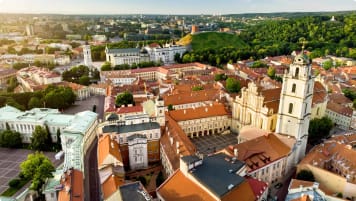Questions about Lithuania: A Definitive Guide for Travellers
Escorted small group tours for mature and senior travellers to the Baltic state of Lithuania. Designed for couples and solo travellers who like to explore and enjoy learning as they travel to Vilnius, or Grutas park and beyond.
18 Nov 19 · 2 mins read
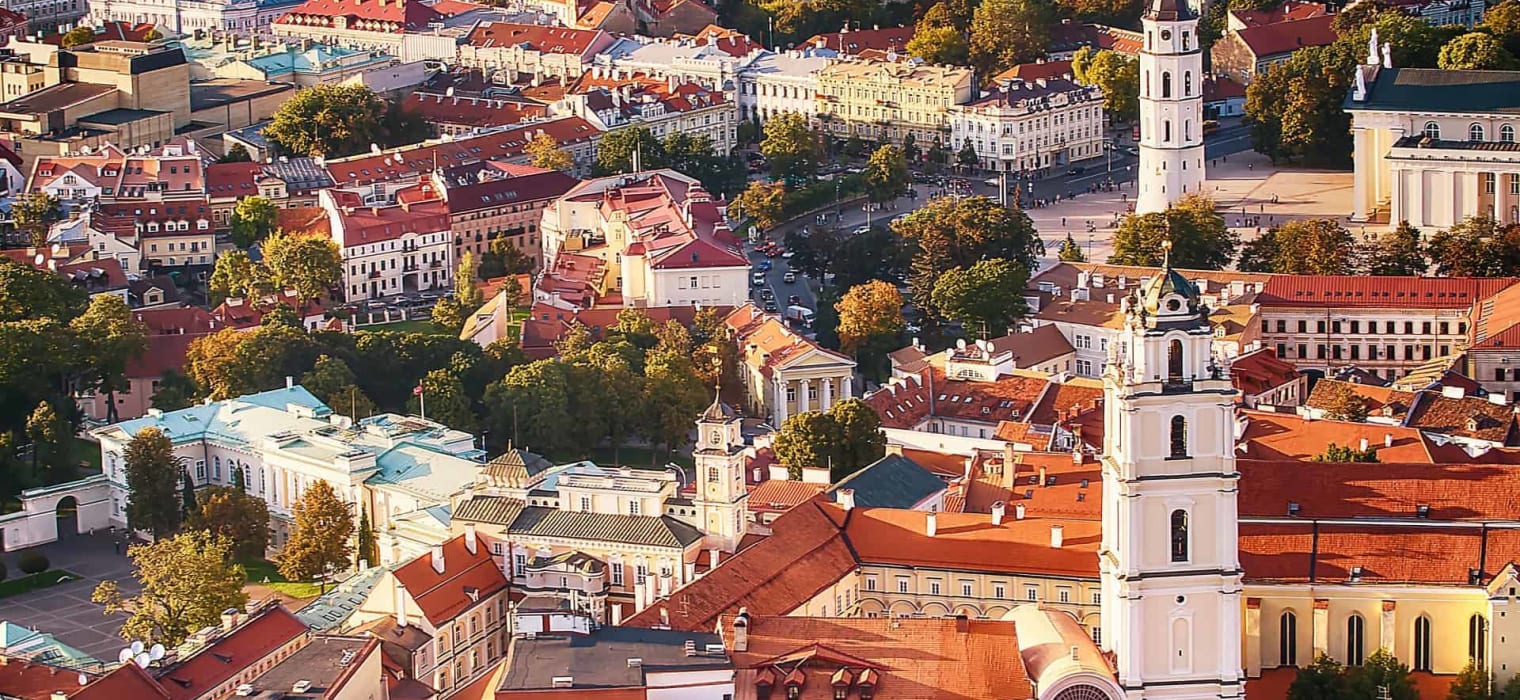
Questions About Lithuania for senior travellers.
Odyssey Traveller specialises in crafting unforgettable experiences for senior and mature-aged travellers, exploring and learning as a couple or solo traveller. Providing adventure and educational programs to escorted small group tours since 1983. Odyssey has built up a reasonable knowledge bank to answer questions about Lithuania that travellers are likely to ask, as they make their plans to tour independently, or with us as part of a small group tour. We hope that this list of frequently asked questions and the answers we provide will help you with planning your next holiday.
Read on, but please do not hesitate to contact us via the website, or through email or chat if you have more questions about Lithuania or our other tours.
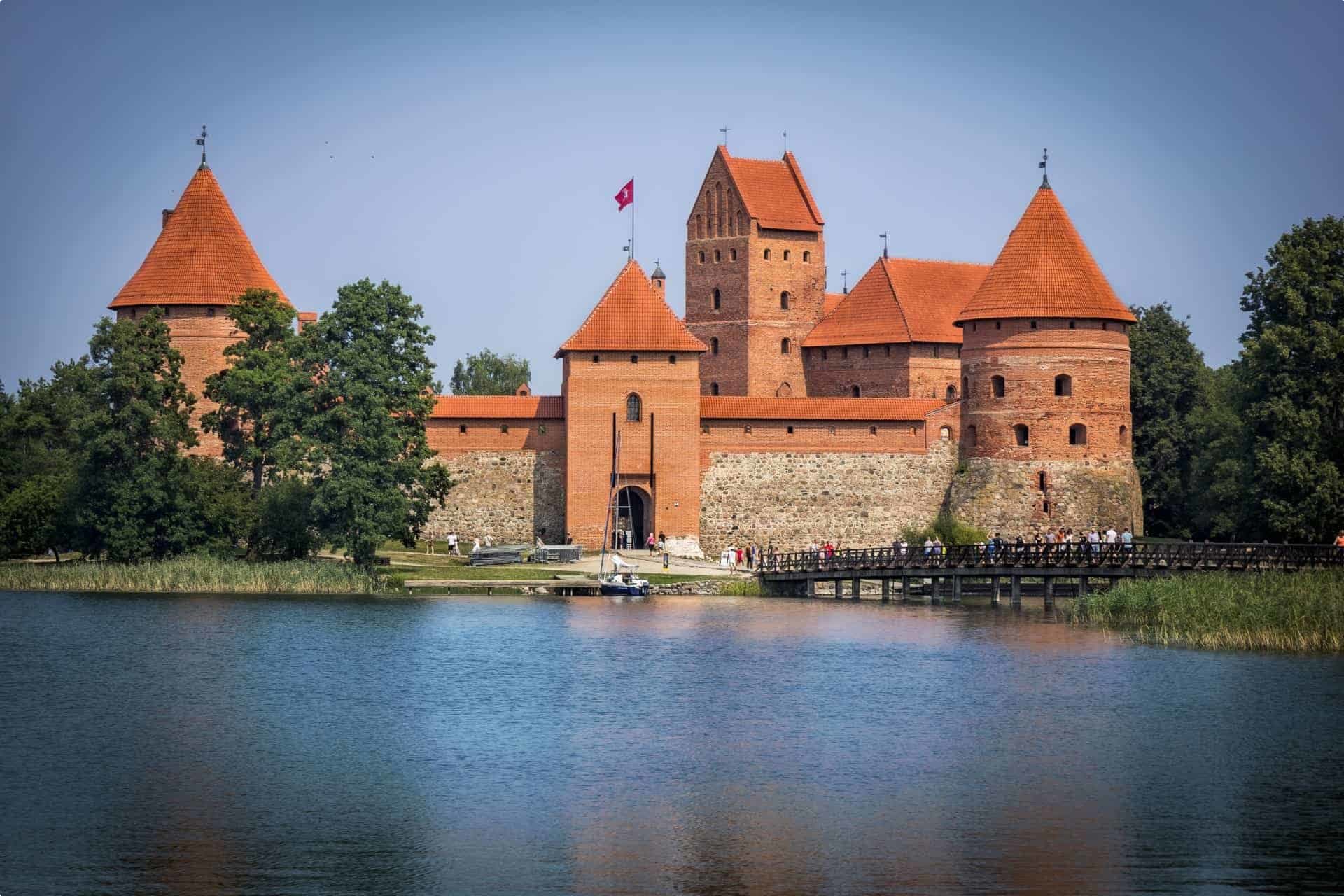
FAQs
Where is Lithuania located?
The Republic of Lithuania is in the Baltic region of Europe and the country can be found at the geographical centre of the continent. It is the largest and most populous of the Baltic states, the others being Estonia and Latvia. You can learn more about the Baltic nations and Baltic travel with our guide here.
Lithuania has a coastline at the Baltic Sea in the west and is bordered by Latvia in the north, Belarus to the southeast, Poland to the south and Russia to the southwest.
Lithuania covers an area of 65, 300 sq km, making it slightly smaller than Tasmania.
What are the origins of the name 'Lithuania'?
The first concrete mention of Lithuania’s name (recorded as Lituae) is from 1009 in a written account of the mission of St. Bruno. Scholars hypothesise that the name is derived from the name of a small river near Kernave, called the Lietauka. The river would have flowed towards the land of Lithuania and potentially the people who lived nearby were given a name derived from the river.
Other suggest that Lithuania comes from the primary form of the Lithuanian ethnonym, leitis (the ethnonym leitis is still used in Latvia for “Lithuanian”). This is how those from Lithuania living in other territories were referred to in the fourteenth and fifteenth centuries.
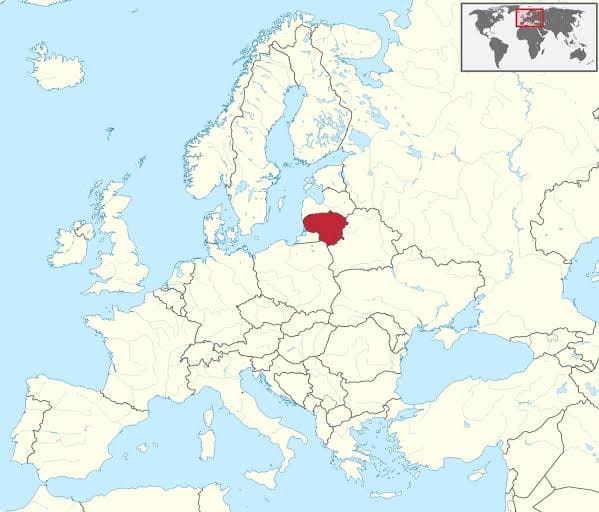
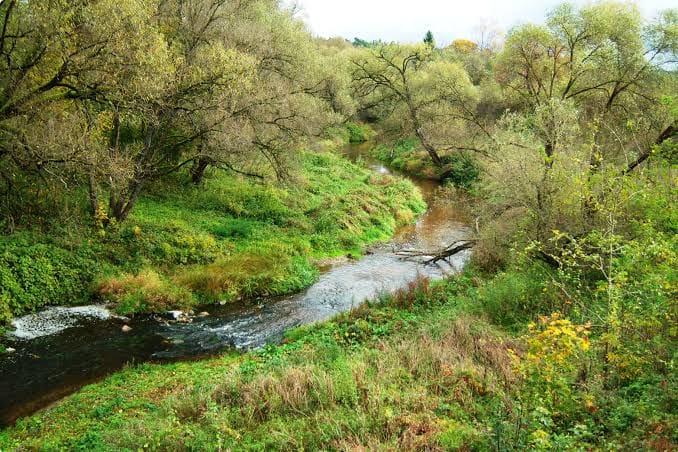
How did Lithuania become a country?
While there was mention of Lithuania as some form of state in the 11th century, it wasn’t until the 13th century that the Liths or Lithuanians united under the rule of Mindaugas. Mindaugas became king in 1251
united in the 12th century under the rule of Mindaugas, who became king in 1251. It is said the Kingdom of Lithuania was formally created on 6 July 1253. Ten years later Mindaugas was assassinated and soon after the Grand Duchy of Lithuania, a pagan warrior state, was established.
In 1386, Poland and Lithuania united, eventually creating the Polish–Lithuanian Commonwealth that would last until 1795. From almost two centuries, Poland and Lithuania were one of medieval Europe’s Europe’s largest empires, conquering lands from the Black Sea almost to Moscow.
As a consequence of the Partitions of Poland, Lithuania came under Soviet rule in 1795 but there was strong anti-Russian sentiment in the country. In 1918, following the collapse of Russia and the end of WWI, Lithuania declared independence and was re-established as a democratic state under German protection. During WWII, it was briefly occupied by the Nazis while they fought the Soviet Union and in 1940, Lithuania was again absorbed into the Soviet Union.
From 1988 there was a strong push for independence growing in Lithuania and in March 1990, Lithuania restored its sovereignty with the Act of the Re-Establishment of the State of Lithuania.
The Soviet Union, in response, placed economic sanctions on Lithuania and in January 1991, Soviet authorities attempted to overthrow the Lithuanian government. Soviet troops stormed Vilnius and killed 14 civilians, injuring many others. However, this failed to crush the Lithuanian independence movement and during the national referendum the next month over 90% of Lithuanians voted in favour of a democratic and independent Lithuania. Lithuania’s independence was recognised by major European nations, as well as other important countries like the United States. The Soviet Union finally recognised the independence of Lithuania, and other Baltic states, on Sept. 6, 1991.
What language do they speak in Lithuania?
The sole official language of Lithuania is Lithuanian which is spoken by 96% of the population. The largest minority languages are Russian and Polish.
Lithuanian is one of two living Baltic languages, the other being Latvian, and is classified as an Indo-European language. It is often described as one of the most conservative Indo-European languages as it retains many original features related to grammar and phonology that are found in other ancient languages such as Sanskrit or Ancient Greek.
The longest word in Lithuanian is nebeprisikiškiakopūsteliaujantiesiems (37 letters long) and whose exact meaning is something along the lines of ‘a group of people who used to go to a forest, to pick up some rabbit grass, but are no longer doing that’. It is not a word used very often anymore!
What is Lithuania known for?
Lithuania is known for its natural beauty and its lush, green landscapes. Around 1/3 of the country is covered in forests and nature reserves and Lithuania is also home to 6,000 lakes. With 90km of coastline, there are also idyllic beaches to visit as well.
One natural attraction Lithuania is known for is the Curonian Spit, which is a 98km long, curved sand-dune spit that juts out from the coast and has been shaped by the sea and human habitation over centuries. It is a UNESCO World Heritage Site and is said to have been inhabited since prehistoric times.
As well as its nature, Lithuania is also somewhere you can find the best quality amber in the world. The best amber is found in the Baltic Sea and is known in Lithuania as ‘Lithuanian gold’.
Lithuanians are also known for their love of basketball, which is said to be like a second religion. Since 1937, when the country won gold in the EuroBasket, the sport has been adored by Lithuanians. Despite being such a small country, Lithuania has the fourth best basketball team in the world and several Lithuanians have made it to the NBA’s Hall of Fame. The most famous Lithuanian basketball player is Arvydas Sabonis, who is recognised as one of the greatest European players of all time.

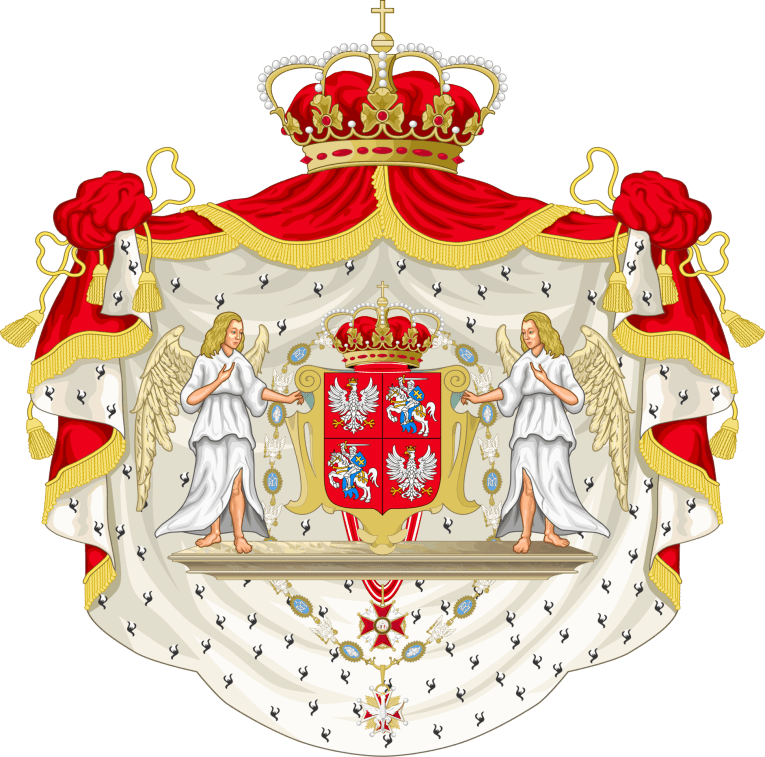
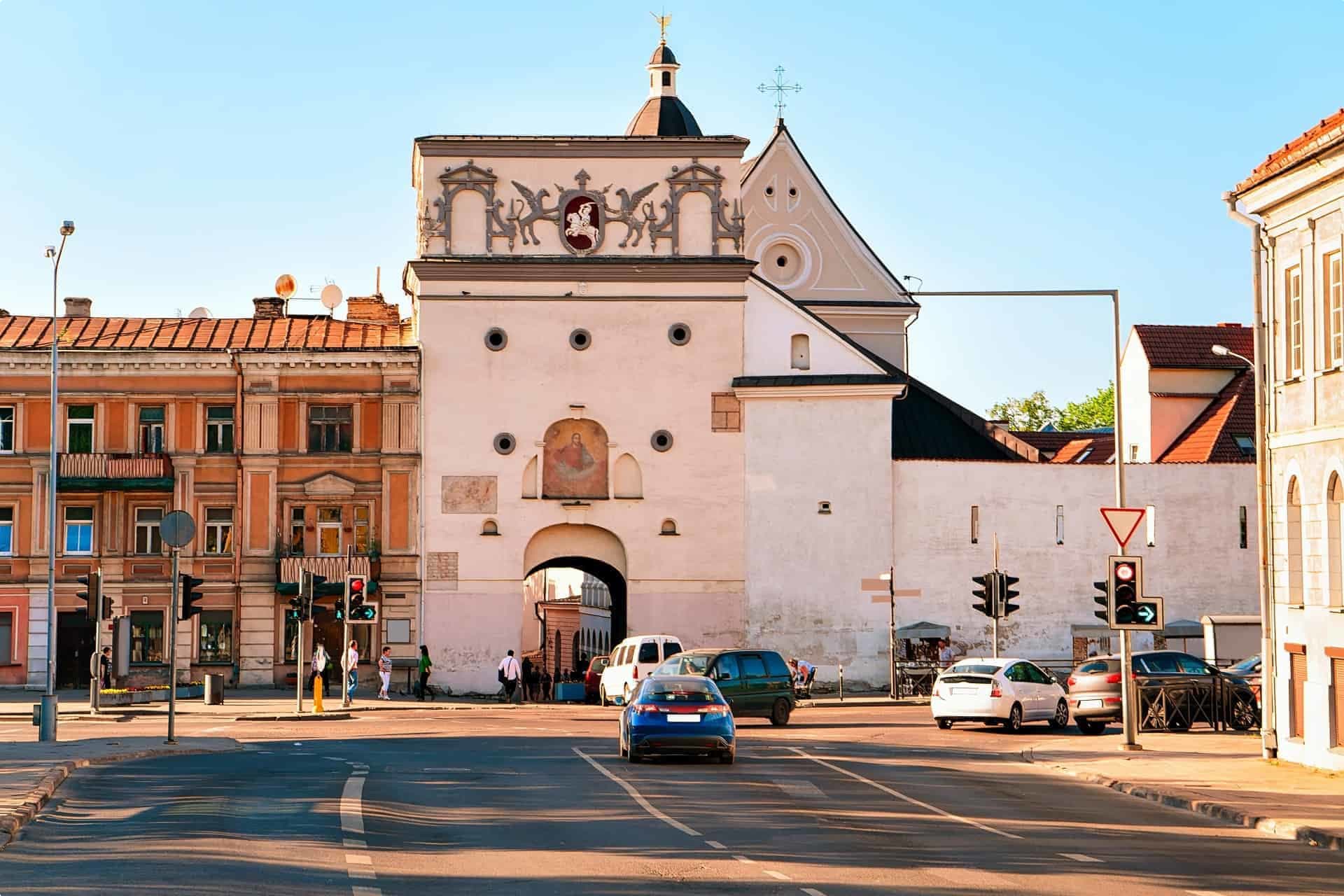
What is the food like in Lithuania?
Lithuanian food reflects both its culture and climate. For this reason, many of the dishes are designed to be hearty and filling and are based around root vegetables that be grown in the cold climate. Think lots of potatoes, cheese and fried pastry. There are some regional variations of typical meals across the country so make sure to head to a local restaurant if you ever find in rural Lithuania. Here are some traditional Lithuanian dishes you can expect to find on a trip to this Baltic nation:
-
Cepelinai – Cepelinai, or potato dumplings, are Lithuania’s national dish. They are large dumplings stuffed with boiled or raw potatoes and pork that are then cooked and drizzled with sour cream and bacon. They are called cepelinai because of the similarity of their shape to zeppelin airships.
-
Varškės apkepas – Varškės apkepas are fried curd cheese cakes, usually served with fresh berries or jam. A simple dish, the cakes are simply curd cheese coated in a mix of flour, egg and sugar and then fried in oil.
-
Saltibarsciai – Saltibarsciai is a type of beetroot soup served cold. It is made with beetroot, kefir, green onions and dill. It is usually served with boiled potatoes and hard-boiled eggs.
What is Lithuania's currency?
The currency of Lithuania is the Euro (EUR) but prior to January, 2015 it was the Litas (LTL). Some typical costs you might expect in Lithuania are:
- 1 litre milk: 1 EUR
- 1 bottle of beer: 1.20 EUR
- Eating in restaurant for two: 24 EUR
- Cinema ticket: 7 EUR
Can you visit Lithuania without a visa?
Lithuania is part of the European Union and party to the Schengen Agreement. This means that anyone who is not a EU national is required to have a passport valid for three months and issued within the past ten years for the duration of their stay. A visa is not required for stays of up to 90 days.

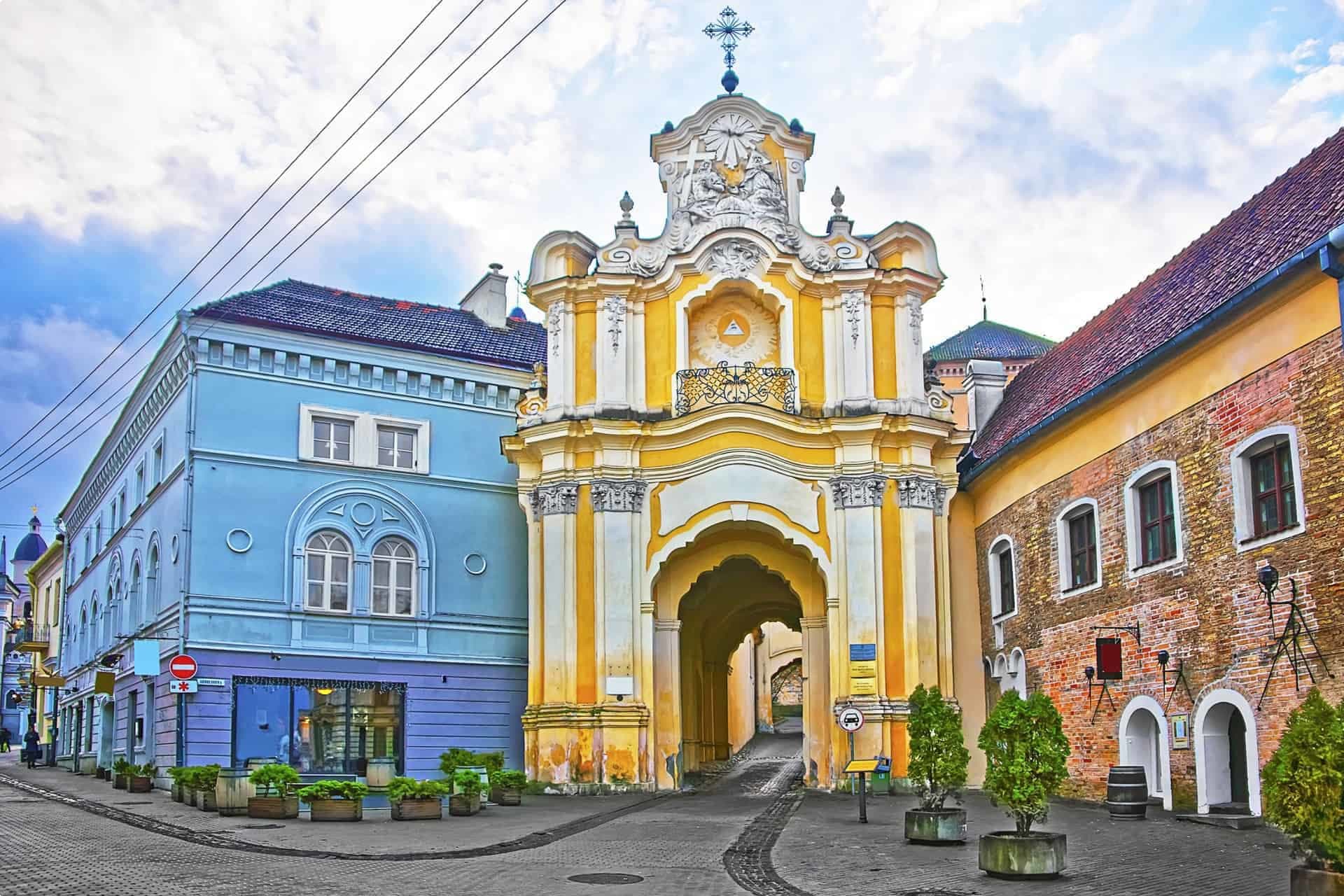
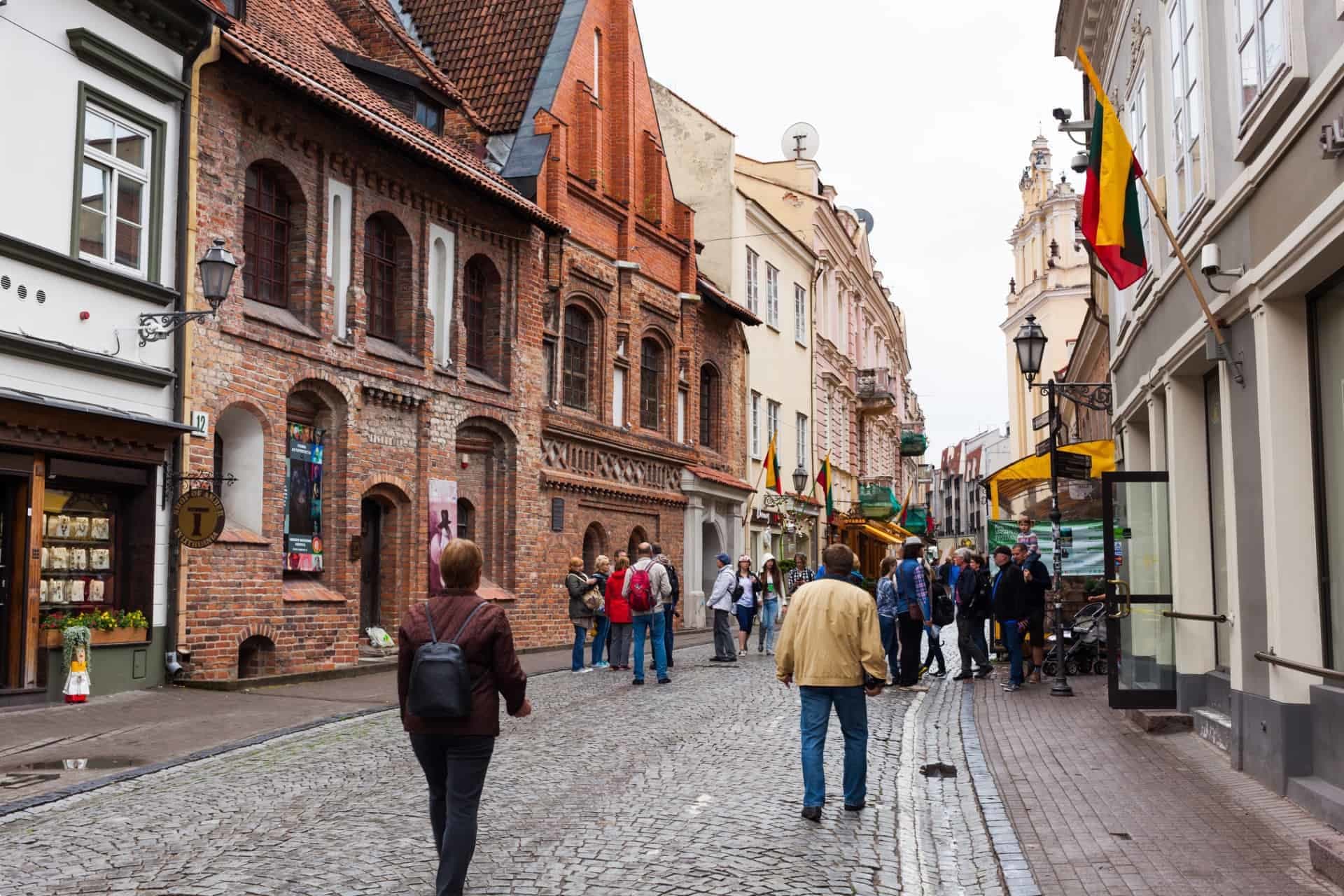
What is the weather like in Lithuania?
Given Lithuania is a relatively flat country, overlooking the Baltic Sea, towards the north of Europe, one can expect cold, severe winters and warm but mild summers. On the coast, the temperatures are below freezing in January and February and around 18 degrees in summer. In inland areas, the temperatures are hotter in summer and slightly colder in winter.
Where should you visit in Lithuania?
Despite being a pocket-sized republic, there is plenty see and do all across Lithuania and many places where you can explore the country’s history and culture. Here are some of the top sights:
- Vilnius – the nation’s capital is an abundance of beautiful architecture with a wonderfully authentic Old Town to explore. It is definitely worth visiting the Palace of the Grand Dukes of Lithuania, built in the 17th century and featuring an impressive museum, and Gediminas Castle, built by Grand Duke Vytautus in the early 15th century. Although it is very beautiful, the city has had a turbulent past and reminders of loss and tragedy can be found all throughout the city such as at the Museum of Genocide Victims. You can have the opportunity to explore some of these places on a Odyssey Traveller tour to Lithuania, such as our small group tour of the Baltic states.
- Kaunas – Wedged between the Nemunas and Neris Rivers, Kaunas is the second biggest city in Lithuania. A student city, Kaunas is known for its quirky bars and craft beer but is also aesthetically pleasing in its own right. With cobblestone pathways and a charming city hall, there is a lot to admire in this beautiful little city and a visit to Kaunas is one way to experience Lithuanian culture.
- Curonian Spit National Park – there are four main villages in this national park, Nida, Juodkrantė, Pervalka and Preila, which are collectively known as ‘Neringa’. Here you can enjoy verdant pine forests and stretches of sandy beaches while enjoying fishing, hiking and windsurfing.
- Trakai Island Castle – Trakai Castle is located in Trakai, Lithuania on an island in Lake Galve. It is one of the country’s most famous and treasured spots. The castle was built in the 15th century and gives an insight into Lithuania’s fascinating history and culture. It is around 20km from the capital of Lithuania.
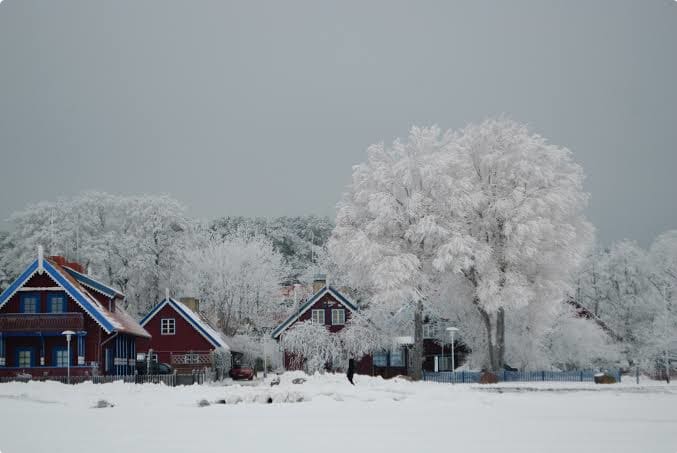
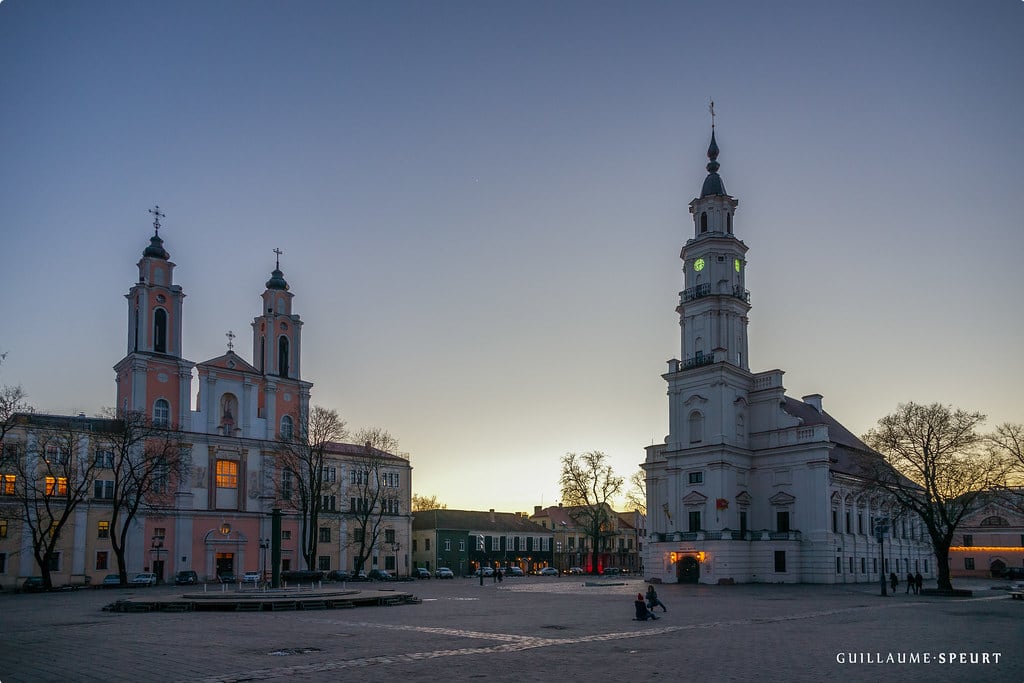
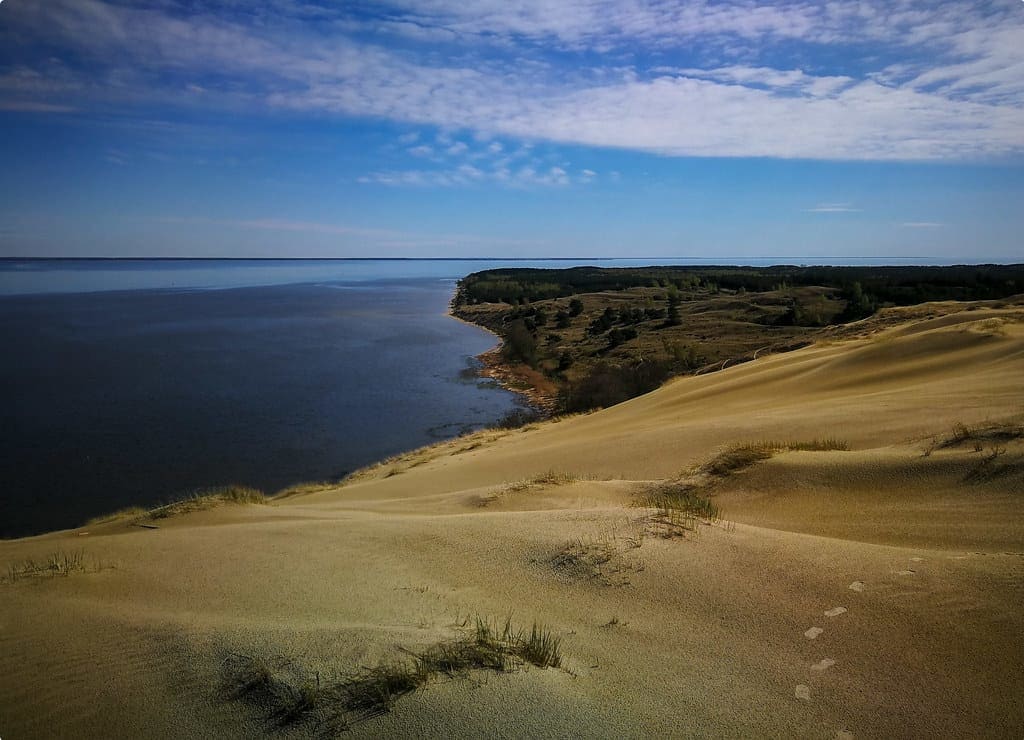
Related Tours
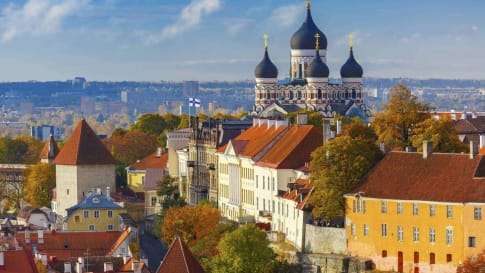
days
Sep, MayBaltics Small Group Escorted Tour: Latvia, Estonia, Lithuania
Visiting Estonia, Finland
An escorted small group tour to the Baltic States of Europe that explores the key destinations of this region starting in Berlin, then making its way through Poland, Estonia, Latvia, Lithuania, Finland and concluding in St. Petersburg. Each day has scheduled itineraries supported by local guides who share knowledge and authentic experiences of the places visited. This is small group travelling to the Baltics for like minded people.

21 days
May, Oct, AprBaltics: Latvia, Estonia, Lithuania, Helsinki, Stockholm and Copenhagen
Visiting Denmark, Estonia
An escorted small group tour to the Baltic States of Europe that explores the key destinations of this region starting in Warsaw, then making its way through Poland, Estonia, Latvia, Lithuania, Finland, Stockholm and concluding in Copenhagen. Each day has scheduled itineraries supported by local guides who share knowledge and authentic experiences of the places visited. This is small group travelling to the Baltics for like minded people.
From A$16,975 AUD
View Tour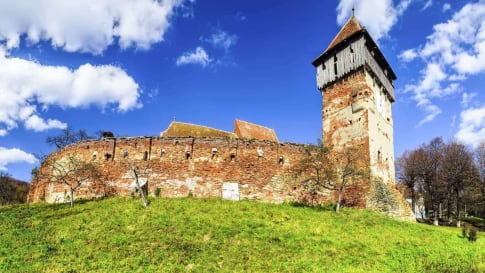
13 days
Apr, Aug, May, MarRomania Small Group Walking Tour for Seniors
Visiting Romania
This small group escorted tour explores the magnificent landscapes of Carpathian mountains in Romania, and takes in the vibrant culture and rich heritage of Romanian village life. Travel with like minded people, mature couples or solo travellers.
From A$8,765 AUD
View Tour
days
Oct, MayHelsinki to Irkutsk on the Trans-Siberian Railway
Visiting Finland, Russia
Escorted tour on the Trans-Siberian railway network from West to East starting in Helsinki and finishing in Irkutsk after 21 days. This is small group travel with like minded people and itineraries that maximise the travel experience of the 6 key destinations explored en-route. Our small group journeys are for mature couples and solo travellers.

days
Apr, AugIrkutsk to Helsinki on the Trans-Siberian Railway
Visiting Finland, Russia
Escorted tour on the Trans-Siberian railway network from East to West starting in Irkutsk and finishing in Helsinki after 21 days. This is small group travel with like minded people and itineraries that maximise the travel experience of the 6 key destinations explored en-route. Our small group journeys are for mature couples and solo travellers.
Articles

Grutas Park Lithuania
A communist statue graveyard, Grutas Park is a dark homage to one of the worst periods of Lithuanian history. Eight kilometres east of Druskininkai, a spa town on the Nemunas River in southern Lithuania, Grutas Park is essentially a sculpture garden of over 100 Soviet-era statues and artefacts, providing an unprecedented insight into the Red Terror that was unleashed against Lithuania and the stifling atmosphere of Soviet rule. As well as statues, visitors can see an impressive collection of documents, newspapers, propaganda posters, video footage and audio files from the time.

Hill of Crosses, Lithuania
Just outside the northern city of Siauliai lies a small hill in the middle of farmland that has been crowned with around 100,000 crosses in all different sizes. There are tiny crosses, massive wooden crosses and crosses handcrafted from metal. Known as the Hill of Crosses (Kryziu Kalnas), it is both a pilgrimage site and a testament to Lithuanian strength and defiance under Soviet rule. It has come to represent the peaceful endurance of Lithuanian Catholicism in the face of so many threats throughout history.

Trakai Island Castle, Lithuania
Trakai Island Castle is like something from a fairy tale - there is nothing quite like admiring the view of the coral-coloured brick towers surrounded by moss-green trees as you cross the wooden bridge, with the castle's reflection glimmering in the surrounding waters of Lake Galve. The Gothic style castle is more than 600 years old and houses the impressive Trakai History Museum, which showcases a range of interesting exhibits including medieval weapons, chainmail, 19th-century embroidery and glassware and religious art. Trakai was one of the main centres of the Grand Duchy of Lithuania and with just one glimpse of the castle you can feel the majesty and splendour of this place. Less than an hour from Vilnius, the capital of Lithuania, this beautiful attraction is a favourite day trip from the city among travellers.
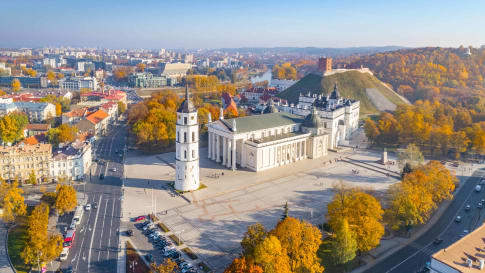
Vilnius, Lithuania
Vilnius, is part of the escorted small group tour of the Baltics for senior travellers, that includes Berlin, Poland, Latvia, Estonia, Finland and finishes in St Petersburg.
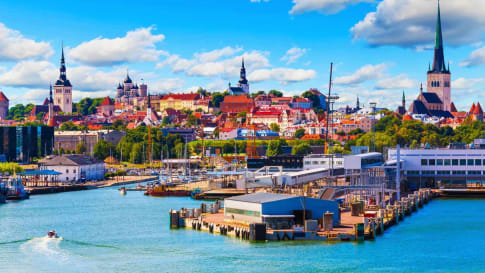
Baltic State History: The Definitive guide for Senior Travellers
History of the Baltic States The term “Baltic states”–used to describe the countries of Estonia, Latvia, and Lithuania–is a geopolitical term, a shorthand to group together these three Northern European sovereign states. But though the…

Baltic States Guide for mature & senior travellers
Baltic States Guide for mature & senior travellers Odyssey Traveller offers a 21 day tour of the Baltic States for mature and senior travellers. We explore Latvia, Estonia and Lithuania, as well as parts of…

